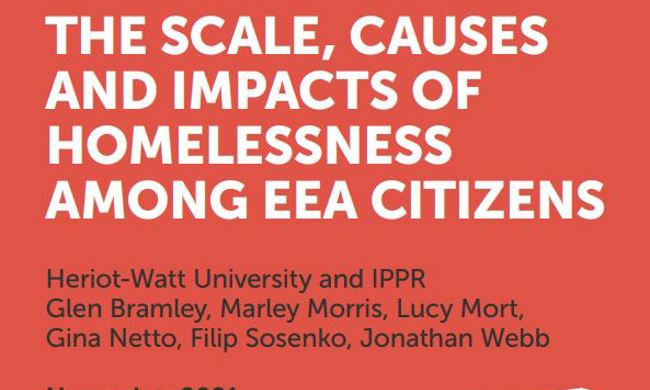Rough sleeping is the most visible form of homelessness but there are a wide range of situations that are also described as homelessness.
Understanding each type of homelessness leads to better support and a better view of homelessness as a whole. Building a picture of the number of people who are homeless is complicated. This is due to the different ways each type is counted and the limitations of each approach.
There were an estimated 4,667 people sleeping rough in England on a single night in the Autumn of 2024. This was up by 91% on 2021. (source: Rough Sleeping Snapshot in England: Autumn 2024).
The full picture of rough sleeping across the UK is unknown. While the Rough Sleeping Count gives an estimated snapshot of rough sleeping. The UK Statistics Authority was highly critical of these statistics, stating that they did not meet the required standards to be designated as ‘National Statistics’.
The London based CHAIN database currently provides the most robust and comprehensive statistics on rough sleeping. This data shows that the number of people having no choice but to sleep rough in London in 2023/24 was 11,993, of which 66% were seen sleeping rough for the first time.
Monthly estimates of the number of individuals rough sleeping in Wales show a peak in August 2024, up 22% from the same time the previous year (source: Welsh Government).
In Scotland, the number of households who reported sleeping rough the night before making a homelessness application was 1,916 in 2023/24, a 28% increase on the previous year” (source: Scottish Government).
At the end of March 2024, there were 140,227 families and individuals in Great Britain who were staying in temporary accommodation provided by their local council because they didn’t have their own home. (sources: MHCLG, Welsh Government, Scottish Government).
The length of time people can stay in temporary accommodation can range from a single night to many years. There are a number of different types of temporary accommodation:
Each type of temporary accommodation has its own rules on access and lengths of stay and may not always be appropriate for the individuals staying in them.
Research from Crisis (“I felt invisible”: Revealing the reality behind hidden homelessness, 2025) gives insight into the unstable and often dangerous situations people experience in hidden homelessness. To avoid sleeping rough, people often have to move frequently from place to place, with little access to basic amenities and nowhere to store important belongings, and have to stay with people they do not feel comfortable with and do things they don’t want to do. These situations leave people feeling lonely and isolated, losing their sense of identity, and feeling unsafe to the point of sometimes fearing for their lives.
Data from the Homelessness Monitor research shows the alarming scale of hidden homelessness, with over 200,000 households across Great Britain estimated to be sofa-surfing or sleeping in cars, vans, tents, sheds, garages, etc.
Solace’s Women’s Rough Sleeping Census (Wright et al, 2025) shows that women facing homelessness often avoid sleeping rough in visible places due to the risk of gender-based violence and abuse, and instead will stay with a friend, stranger or acquaintance, sleep in a station, waiting room or 24-hour fast food restaurant, or walk around all night. This means that women are likely to be substantially under-represented in official rough sleeping statistics, and less likely to be supported by outreach teams to end their homelessness.
324,990 families and individuals in England were accepted as being owed support by their local council because they were likely to become homeless or were homeless in 2023/24 (source: MHCLG).
For 26,150 of these households people, the main reason they needed support to try to prevent or end their homelessness was due to them being issued a Section 21 eviction notice by their landlord. This means they had to leave the property due to no fault of their own (source: MHCLG)

This research shows the scale of hidden homelessness in Great Britain.
View moreBased on an online survey of 250 employers, as well as digital ethnography and interviews with 34...
View more
Over the past decade, the scale of homelessness and housing difficulties among EEA citizens acros...
View more